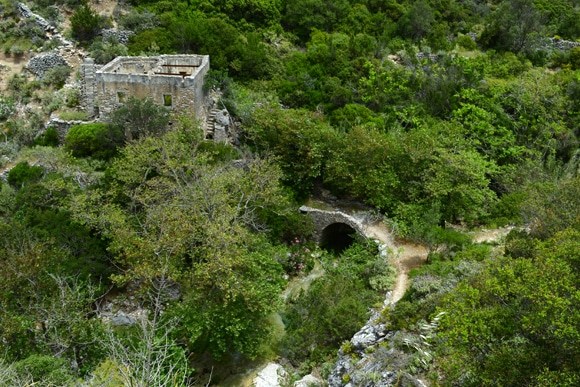
Watermills
Most of the watermills of the island are located along the stream of Mylopotamos. There is a total of 23 watermills, but only three of them are preserved in a good condition with their mechanism intact. They are all privately owned. The name of the village, Mylopotamos (in Greek Mill-River), probably comes from the existence of these mills in the area. The ravine of Mylopotamos is the most fertile area of the island receiving the most water. The mills flourished during the English domination of the island. Their owners were taxed for their operation. The mills grinded cereals and operated thanks to the water that flowed through the river, while at the same time it watered the orchards of the ravine. The watermills were in contact with one another thanks to a large network of paths extending several kilometers. The watermills fell out of use after the 1950s, when they were gradually rendered obsolete by the use of oil-powered mills.
Other areas of the island that have watermills are the ravine of Ocheles, which has ten mills, the canyon of Tsakona in Mitata, the ravine of Karavas and the watermill in Agia Pelagia.
ANATOMY OF A WATER MILL
- The watermill consists of:
- A tower to enable the flow of water from a sufficient height
- Wheel
- Milling room
- Attic
- Customer reception area
- Owner’s house (mill operator)

Leave your comment
You must be logged in to post a comment.